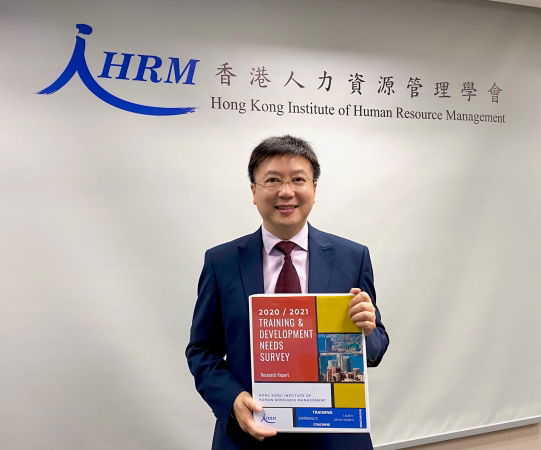Follow us on Telegram and on Instagram @humanresourcesonline for all the latest HR and manpower news from around the region!
share on
However, the average number of annual training hours per employee and the training budgets recorded the lowest levels in a decade.
Driven by the pandemic, Hong Kong businesses saw a surge in the use of digital learning technology from 73% in 2019 to 95% in 2020, reaching a record high in a decade, as revealed by a recent survey by the Hong Kong Institute of Human Resource Management (HKIHRM).
The deployment of digital tools, however, came with several challenges, such as less interaction between trainer and staff (61%), staff not tech-savvy enough (45%), as well as distractions (40%) being the top three challenges.
As the pandemic in Hong Kong is winding down, more than one-third of the surveyed companies have already resumed training in the physical setting, with 23% saying that they would do so in the second half of 2021. But the actual spending allocated for digital learning was 12 percentage points higher than the original budget.
The survey showed the three types of training practices most popular for 2021 are:
- On-the-job training (77%)
- In-house training and development programmes (73%)
- External conferences, workshops and events (62%).
Conducted from March to April 2021, the 2020/21 Training and Development Needs Survey encompassed 128 companies across 18 business and industry sectors, covering approximately 65,400 full-time employees.
Training hours and budget
Meanwhile, nearly 80% of the surveyed companies said COVID-19 has impacted their employee training to a certain extent, while 68% said all levels of employees were affected. In fact, the average annual training hours per employee in Hong Kong has dropped from 14.1 in 2019 to 12.9 in 2020.
The training budget as a percentage of total annual base salary dropped from 3% in 2019 to 2.5% in 2020. The actual spending on training as a percentage of total annual base salary was merely 1.3% for last year.
Both stood at the lowest recorded levels in the past 10 years.
Dr. Chester Tsang, Executive Council Member of the HKIHRM and Co-chairperson of the Learning and Development Committee, said the results were in line with expectations.
“Nonetheless, organisations need to strive in building key areas for learning and development, including personalised learning which involves customising materials to cater for individual needs, creating an immersive learning experience through technology such as simulation and VR, and collaborative learning,” said Dr. Tsang.

(pictured is Dr. Chester Tsang, executive council member of the HKIHRM and co-chairperson of the Learning and Development Committee)
Major training areas for employees and business drivers of L&D
Three in five (62%) of the 127 companies surveyed introduced new learning content in response to the COVID-19 outbreak, including topics such as health and safety during COVID-19 (55%), supporting employees’ mental health (53%), as well as policy on working from home/remote office (40%).
Major training areas were varied for employees at different staff levels in 2020.
Dr. Barry Ip, Vice President of the HKIHRM and Co-chairperson of the Learning and Development Committee, said: “As senior management was gearing up for post-COVID times, strategic thinking and change management were the top training areas for them.
“Resilience and agility management, and mindfulness training to help employees cope with stress, personal changes, and uncertainties topped the C-suite’s agenda. Since working from home had become a norm, middle management needed to acquire skills such as building effective teams and managing their performance.”
Building leadership bench strength and pipeline through talent management (51%), enhancing leadership and people management competencies (50%), and digital transformation/disruption (38%) were the top three commercial factors stated by the responding organisations for workforce’s training and development this year.
Photo / HKIHRM
share on


